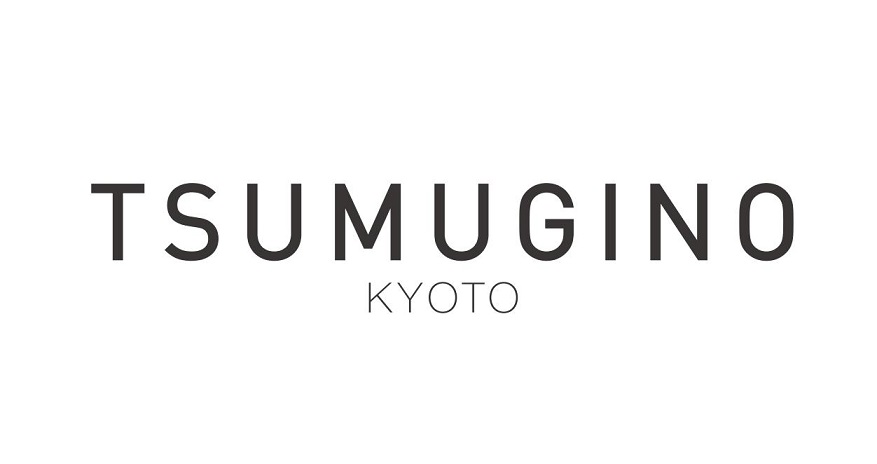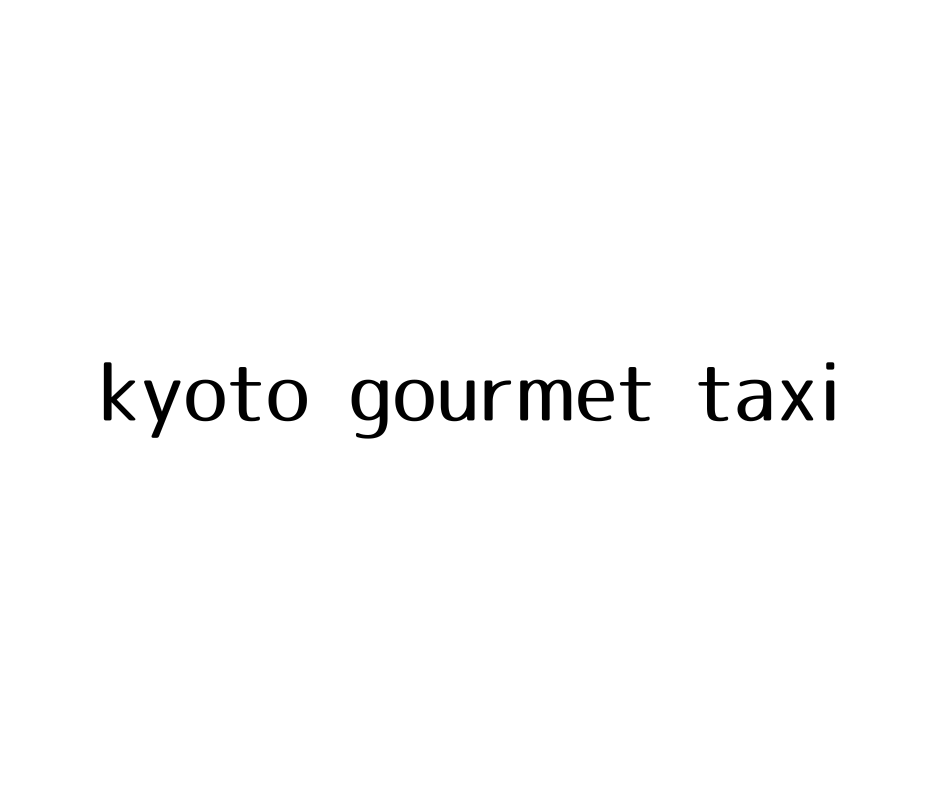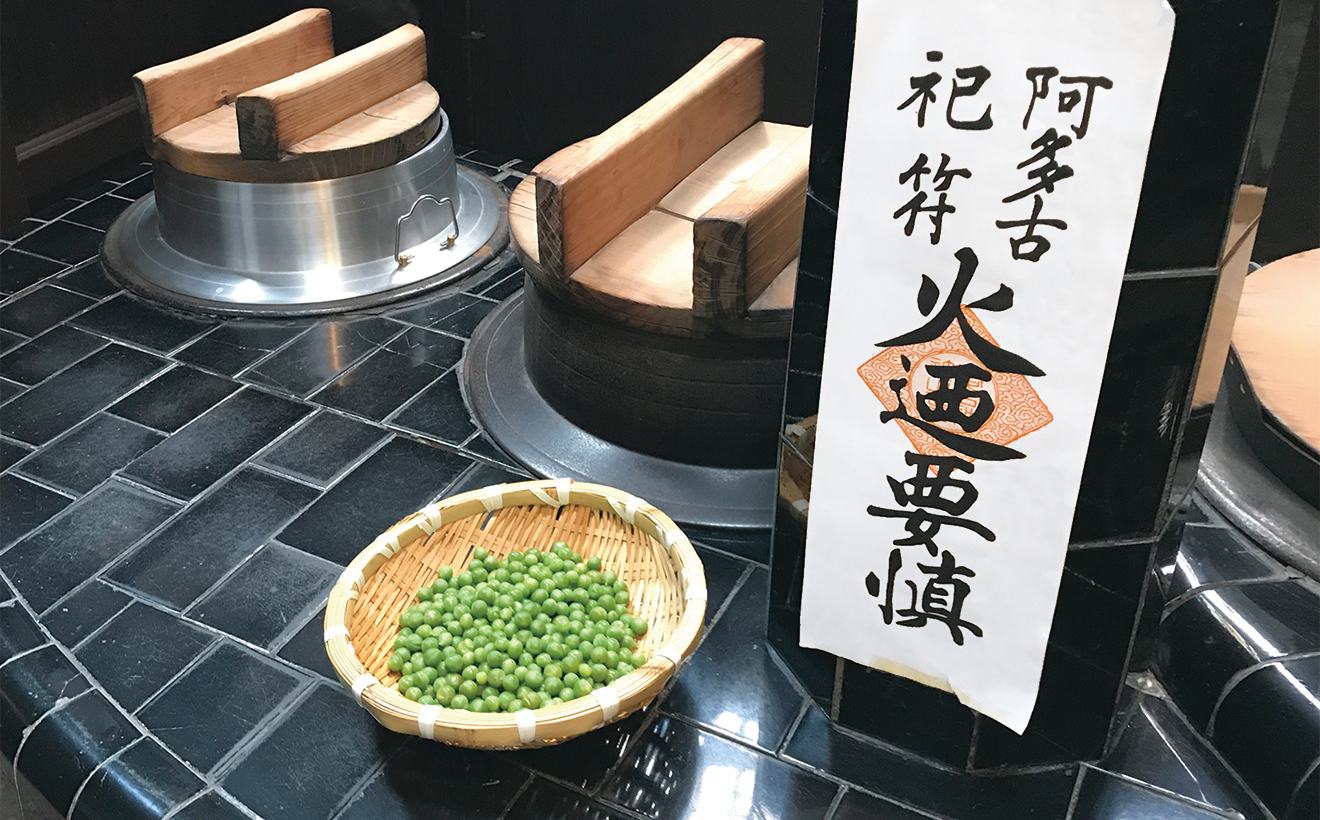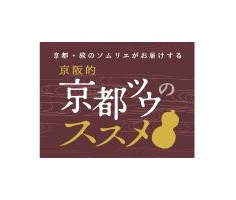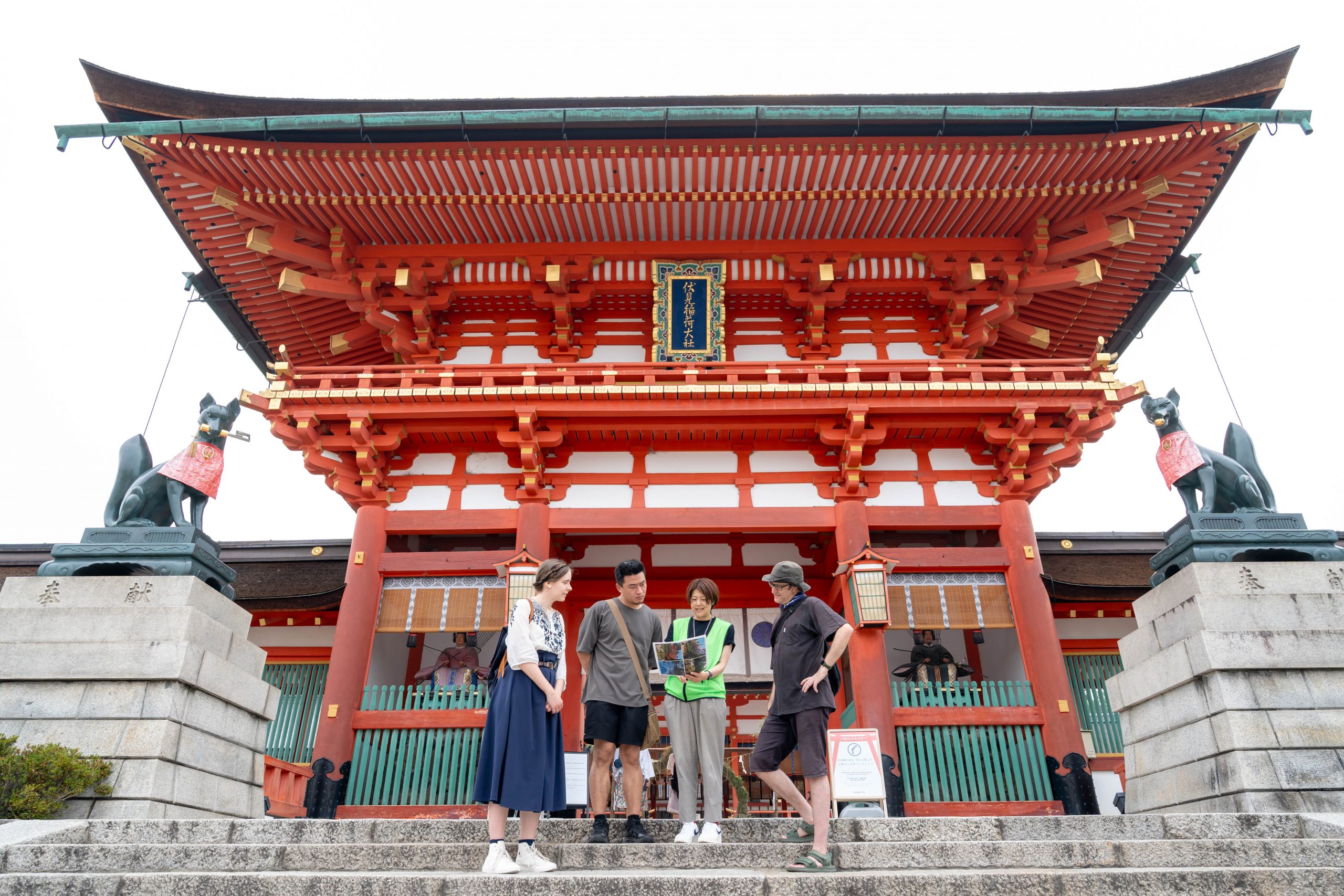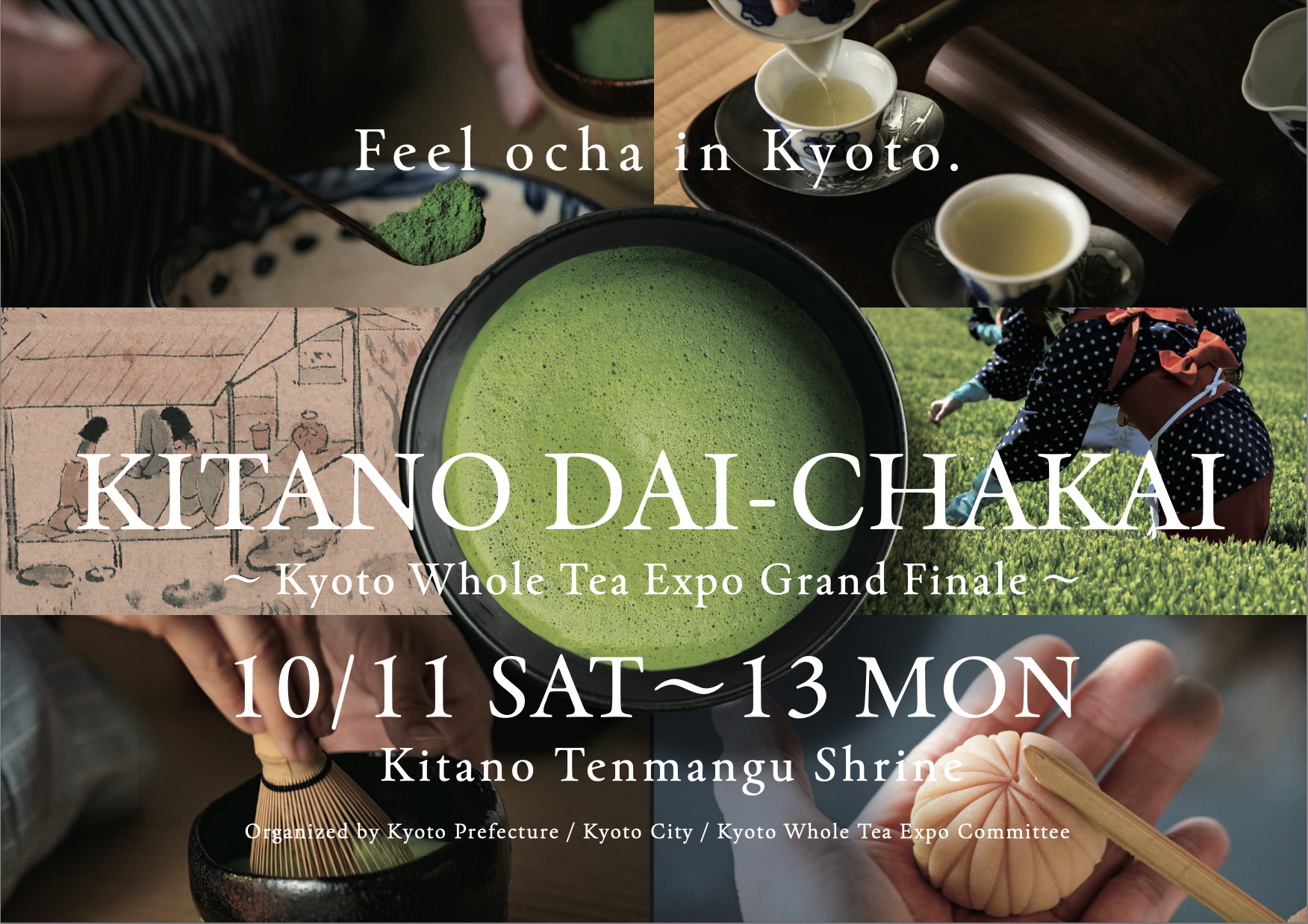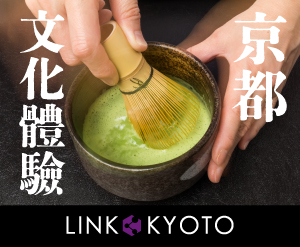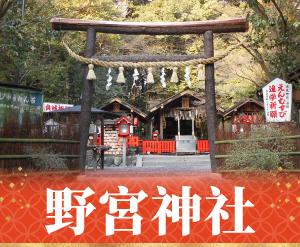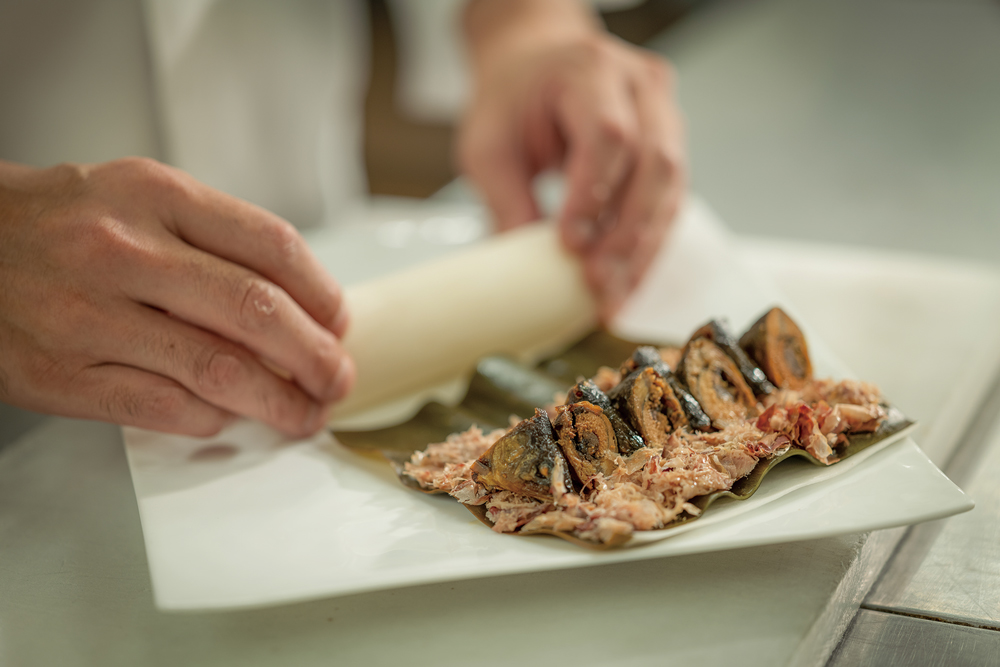
零食物浪費京懷石料理
接近零食物浪費的京都料理
受京都珍貴的烹飪文化啟發,TSUMUGINO KYOTO 構思了“零食物浪費京懷石料理”,即烹飪過程中不產生任何浪費。 [京懷石料理:「京」是京都的縮寫,「懷石料理」指的是傳統的高級日本料理] 我們委託 Takeshigero:京懷石料理美濃吉本店打造一頓不產生浪費的全套京都料理,同時讓我們享受到食材的完整風味和營養。
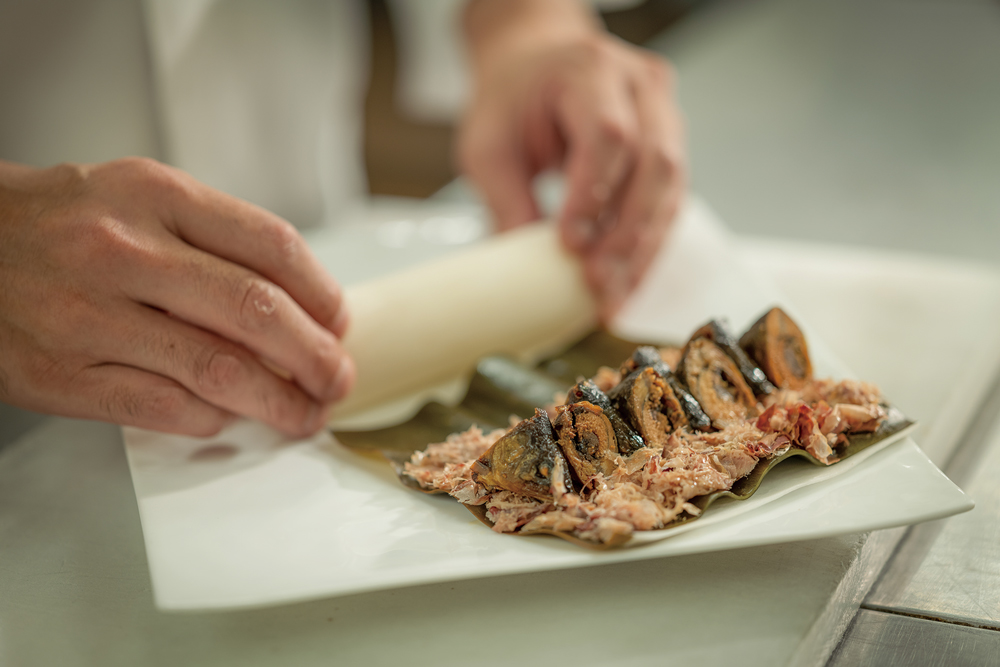
將鰹魚碎和昆布浸入高湯後,再將糖漬甜魚頭捲入蘿蔔絲中一起燉煮。這道名為「美州卷」的菜餚,自17世紀以來便在京都流傳至今。
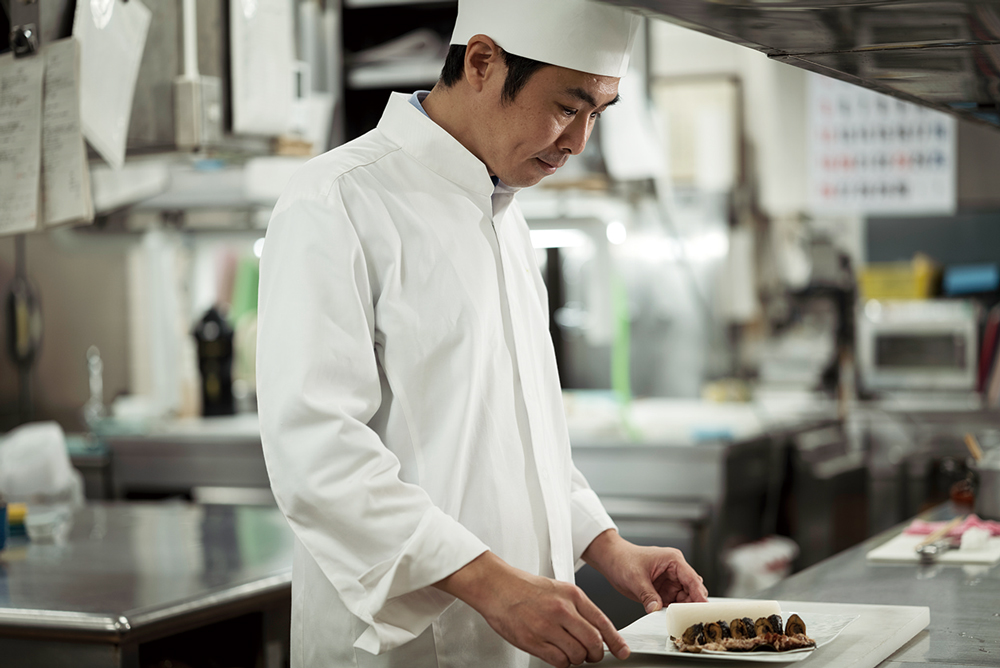
佐竹洋次、武重郎:京懷石美吉總店
京懷石美濃吉的執行料理總監兼主廚。大學畢業後,在南禪寺瓢亭學習了三年,之後進入「竹茂樓:京懷石美濃吉本店」廚房工作。他不僅在廣播烹飪節目中教授烹飪,還在地方政府和企業舉辦的課堂上授課。此外,他還擔任低年級學生的飲食教育課程的講師。
零食物浪費很難嗎?
– 這次,我們要求您準備菜餚時不要產生任何食物浪費。您覺得這其中有什麼挑戰嗎?
其實沒那麼難,什麼時候都能做。我們店主打淡水魚,雖然我們做的是京懷石料理,但食材的用料和味道都恰到好處,對於一個經驗豐富的廚師來說,這並非難事。當然,也有一些菜色可以在家做。
– 那麼,您認為為什麼很多菜餚沒有用到每一種食材呢?
有的,但為了滿足顧客的期望,我們通常不會提供那種需要費很大勁才能把難吃的部分改成可吃的菜品,尤其是在特殊場合才做的那種精緻菜餚。在過去,食物不像現在這麼豐富的時候,大家都會費心把菜色做得可以吃。有些菜色至今仍保留著。例如,鱔魚特別好吃,雖然有刺,但去刺的特殊技法一直傳承至今。
如果價值觀改變,每個人都開始重視“不製造浪費”,我認為這是一件好事。我覺得像這樣的零浪費烹飪仍然很少見,所以如果我們能夠透過向客人推薦這種用餐方式,並在烹飪過程中享受樂趣,來推動變革,我會很高興。
– 您認為今天的菜單中哪道菜可能容易融入家庭烹飪中?
這份菜單中,我覺得最簡單的當屬「無花果果盤」。我們把平常丟棄的無花果皮煮熟,然後放進水果盤的醬汁裡。果皮和果肉的口感和硬度都不一樣,所以我們分開煮來調整口感。很多水果蔬菜的果皮裡都蘊含著豐富的營養。換句話說,植物在自然界中生存所需的生命力就蘊藏在果皮里,所以吃掉整塊的無花果來滋養身體也是理所當然的。
另外,我們也用紅豆(羊羹)製作了用過的茶葉,做成甜點。如果追求口感順滑,可以用食物處理機來製作更細緻的羊羹。也許很多人不在家做羊羹,但我認為食物的不同部位,例如皮、根、核、莖,或者像茶葉這樣只用來提取其精華的食材,都有可能改變它們的烹飪方式。
從這個意義上來說,這次我很高興能對淡水魚烹飪的優點感到放心。從香魚、鰷魚到河蝦,大多數都可以從頭到尾食用,因此無需新設備就能實現零浪費。更何況,能夠吃完整條魚就意味著能夠吸收其全部營養。
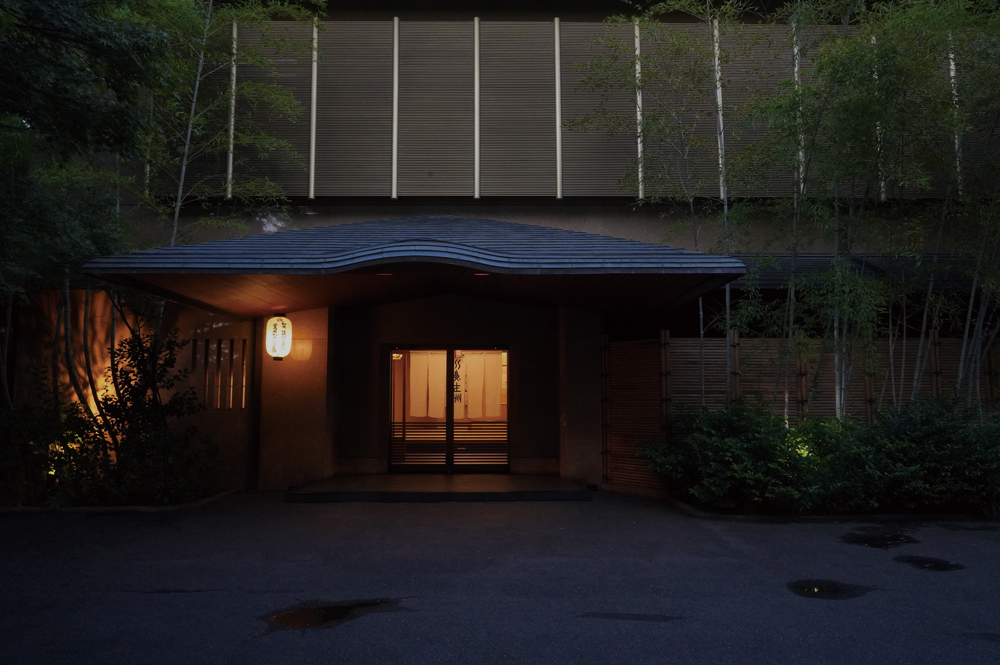
關於如何防止原料浪費的進一步思考
– 能詳細講講如何避免食物浪費嗎?哪些食材的處理特別困難?
一般來說,都是些難做的。這次,我嘗試把鯉魚的各部位,包括魚頭和魚骨,都弄得可吃,這可是個不小的挑戰。就連我以前都沒試過,但一旦開始,就一路摸索著找到了答案。在「酒糟鯉魚湯」裡,我把魚頭和魚骨炸碎,和牛蒡條一起當作配料。我還把魚鱗炸好醃製,然後一絲不苟地用在了「鯉魚凍」裡。
另一個難點是鰻魚頭。我們習慣烹飪淡水魚,包括鰻魚,所以我們煮了四個小時,讓它變得又好又軟,但這可能需要一些額外的技巧。用壓力鍋煮會讓它太軟,失去口感,而直接用水煮又不夠軟。
– 您認為飯店業的未來會是什麼樣子?
嗯,例如,當我嘗試烹飪食物中特別硬的部分時,一開始我以為可以用研磨機或液態氮。實際上,改變食材的選擇更容易。隨著零浪費烹飪越來越流行,我認為新的烹飪用具和技術也會隨之而來。我認為,如果我們能吃到完整美味的食物,對我們的健康大有裨益,因為這樣我們就能攝取大量均衡的礦物質。
儘管如此,我認為重要的是不要只專注於清除所有浪費或無用的東西。例如,我可能會在房間或桌子上裝飾一枝盛開在我們花園裡的灌木三葉草。我可以告訴客人:“這是秋天的花朵”,也許他們會喜歡,想把它帶回家。提醒自己鮮花和食物都是來自大地的饋贈,這會滋養我們的心靈。如果它能滋養我們的思想和靈魂,那麼我認為這不應該被稱為浪費。
這次我們專注於減少食物浪費,但我也意識到還有很多方法可以嘗試,例如食物的包裝,或調整份量,以便客人能夠吃完。話雖如此,我最珍惜的是待客之道。身為專業廚師,我們一直致力於精湛技藝,為客人提供更優質的服務。現在,我覺得,與其說是這種精神本身,不如說是我們表達這種精神的方式,或許能引領我們走向新的方向。
概述:零食物浪費的京懷石料理
全套京都美食,首先是當季的美味開胃菜,然後是湯、生魚片、烤魚等。
1. Sakizuke – 開胃菜
河蝦 舒托 (鹽醃和發酵)
河蝦-從頭到尾都可以食用
發酵甜魚 熟壽司 (發酵壽司)
伏見辣椒
鯉魚凍-內含炸碎的魚骨
哥裡 – 淡水蝦虎魚
松茸 蘑菇和煮菊花葉搭配美味的鯉魚鱗
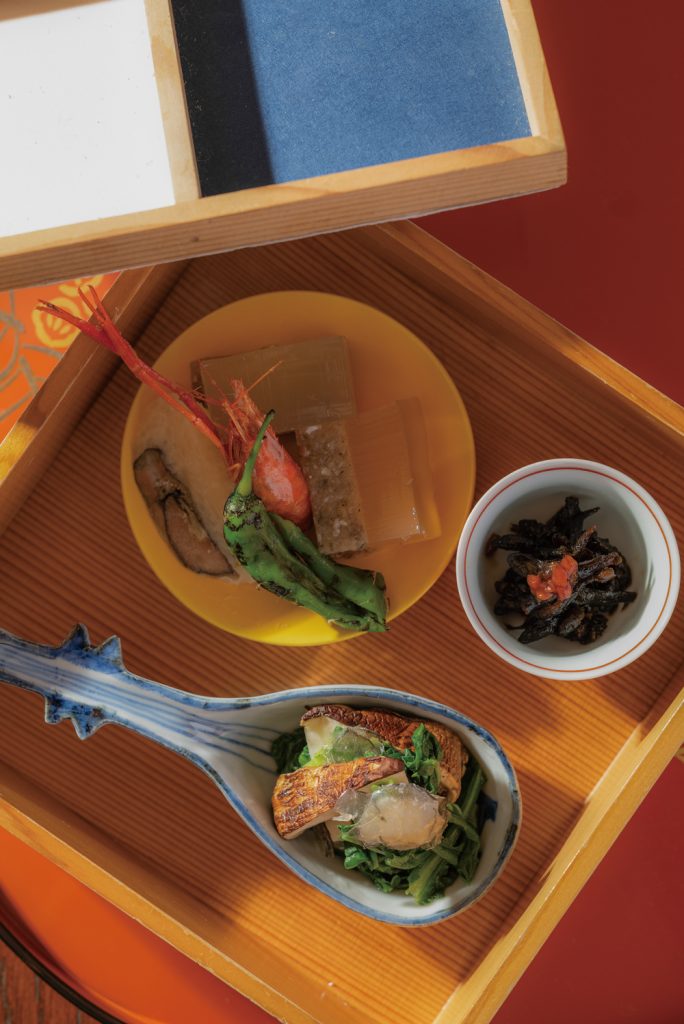
2. 餛飩湯
鯉魚酒糟湯
和
將鯉魚頭和魚骨用牛蒡根和茗荷薑煎煮,上面撒上碎魚骨

3. Mukozuke——生魚片
甜魚 塞越 (切成圈圈)
碳 荒井 (冰水凝固)
和
酥脆的炭烤骨和皮
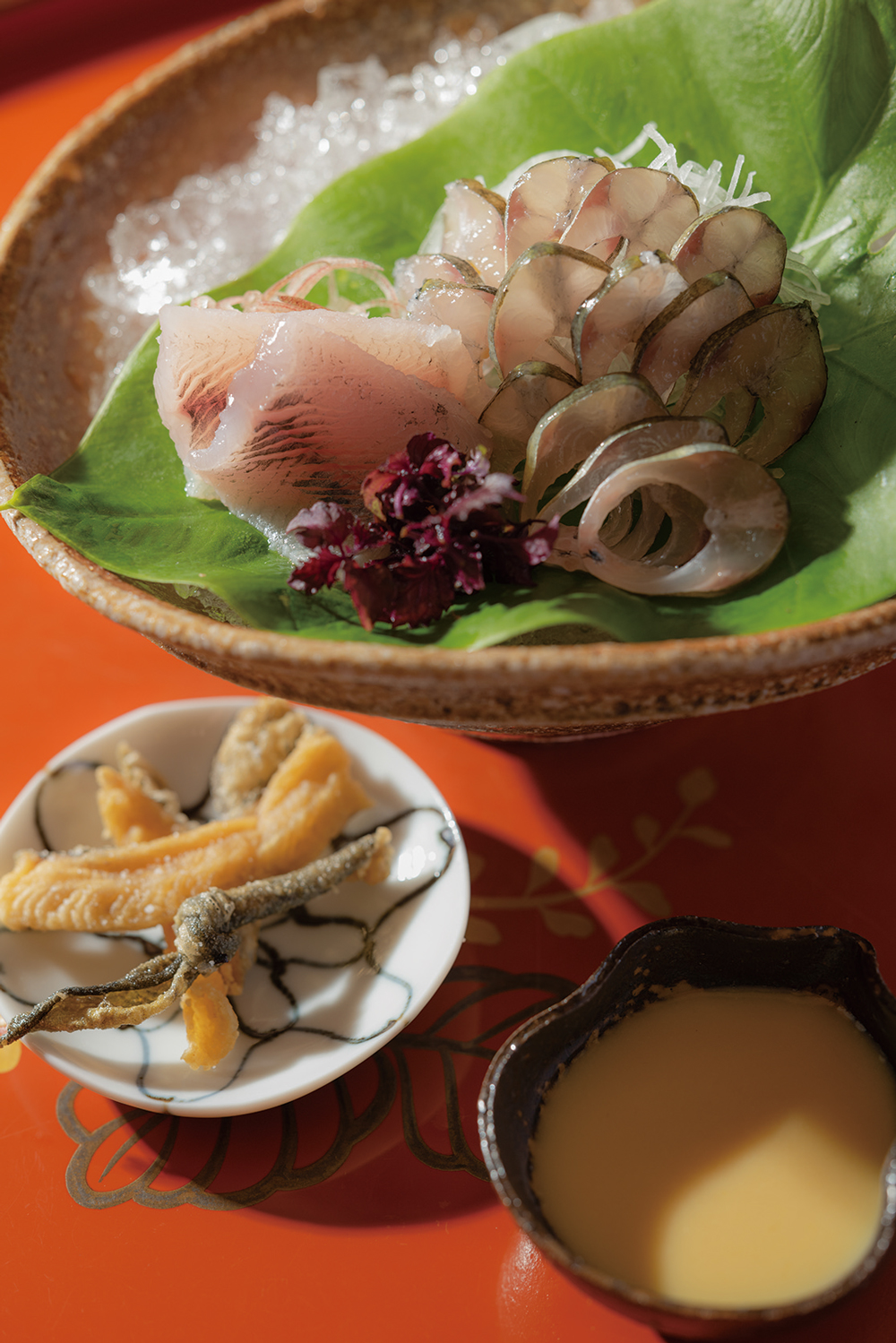
4. Yakimono – 烤魚
烤鰻魚
和
鰻魚骨和頭燉甜
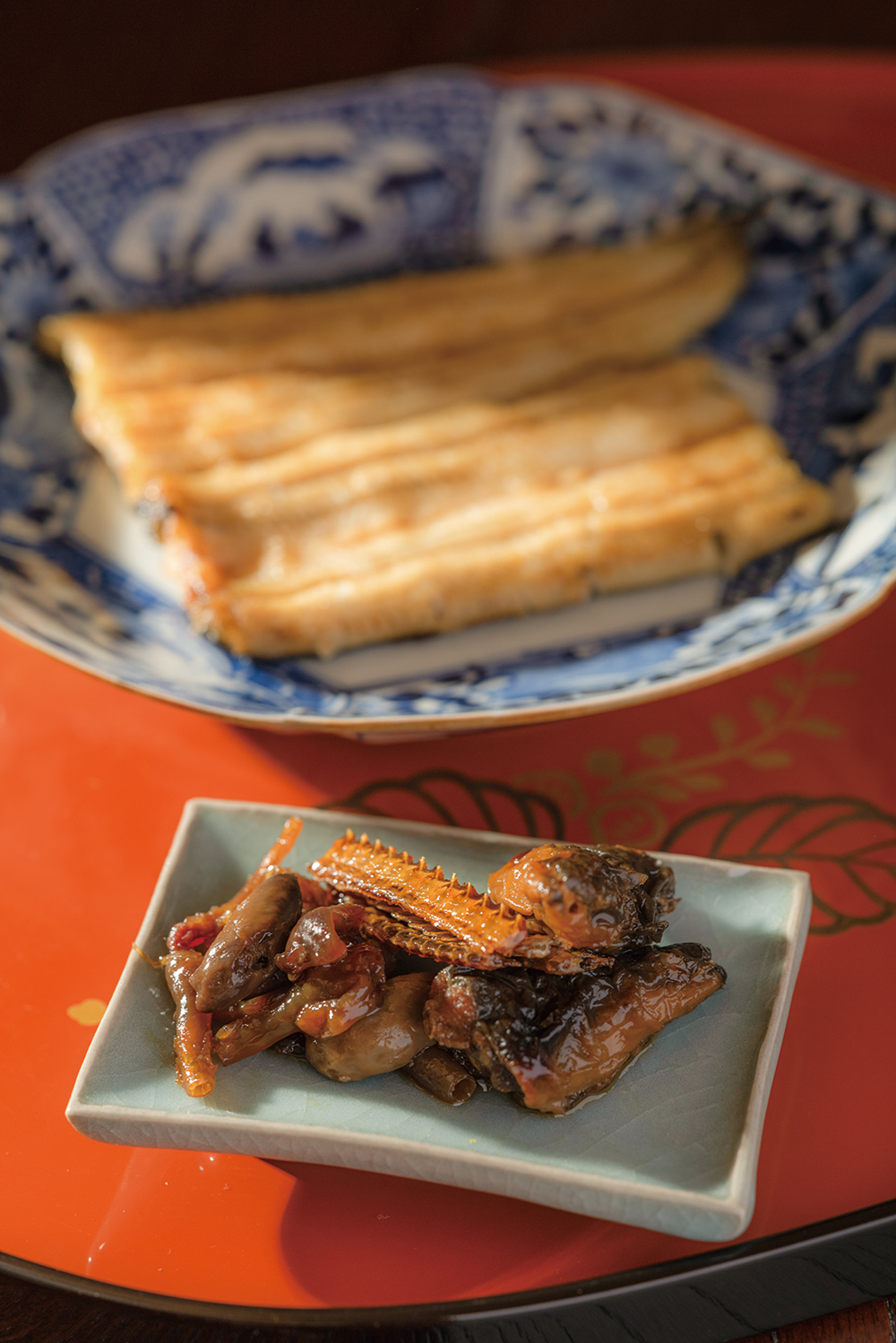
5. 滝和燜魚
甜魚籽燉甜
比舒馬基 – 鰹魚碎、昆布和白蘿蔔
和
韭菜
紅蘿蔔絲
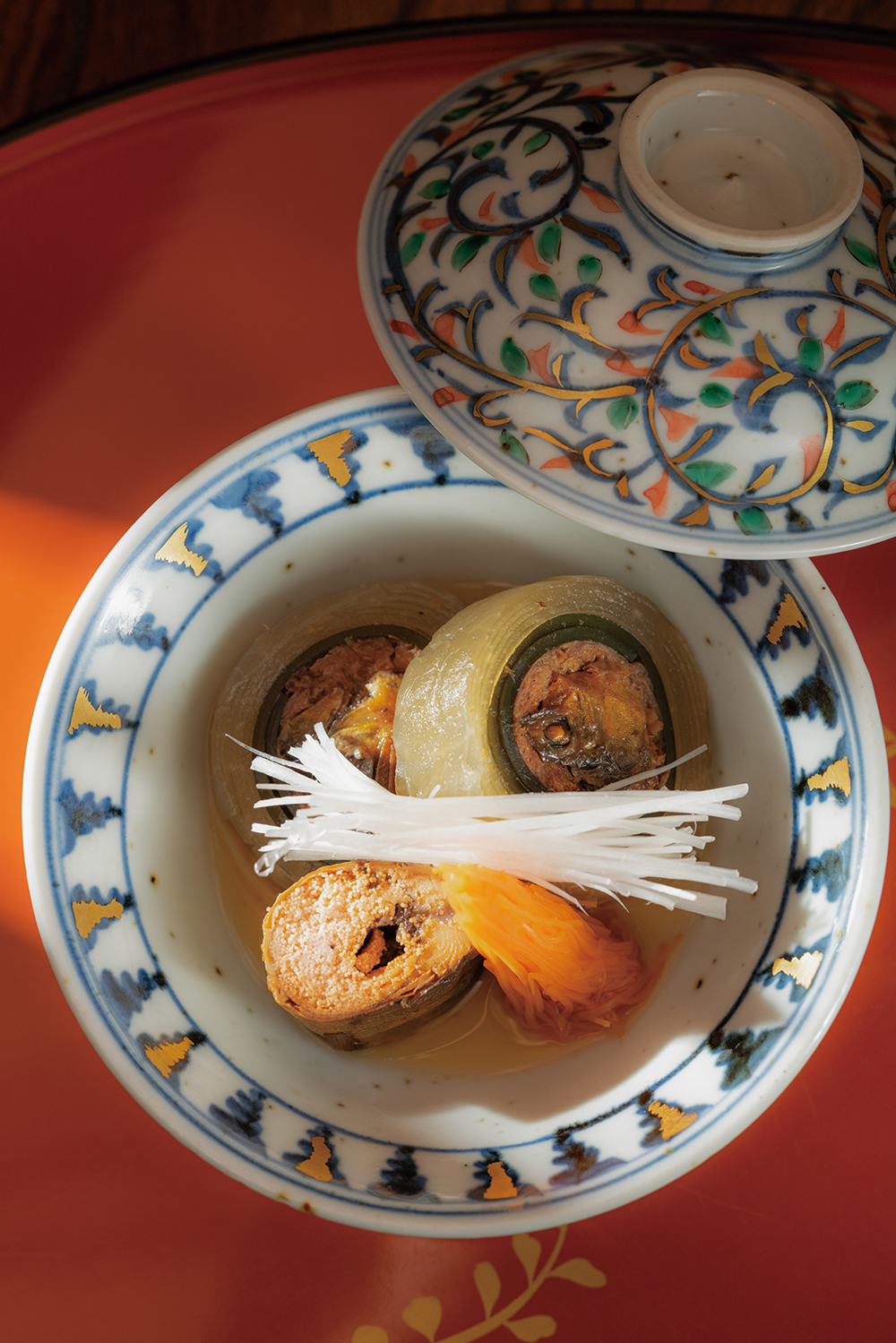
6.Shiizakana – 醃魚
醃漬小魚
和
香菇 菇
開花的黃瓜
土佐醋
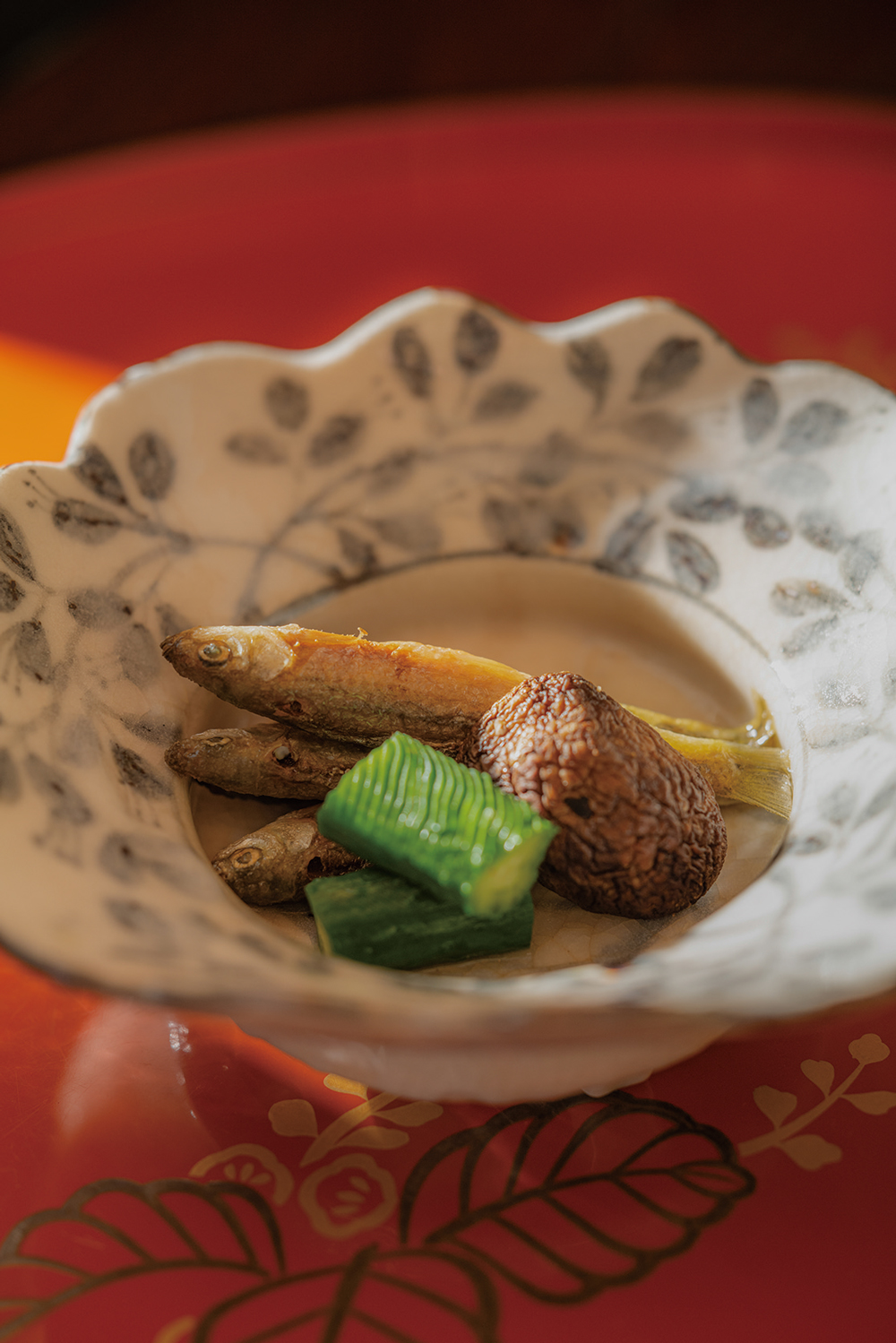
7. 悟飯 – 米飯
甜醬油烤鰻魚和蔬菜米飯(含鰻魚芯)
以及蔬菜殼
和
紅色的 味噌 湯
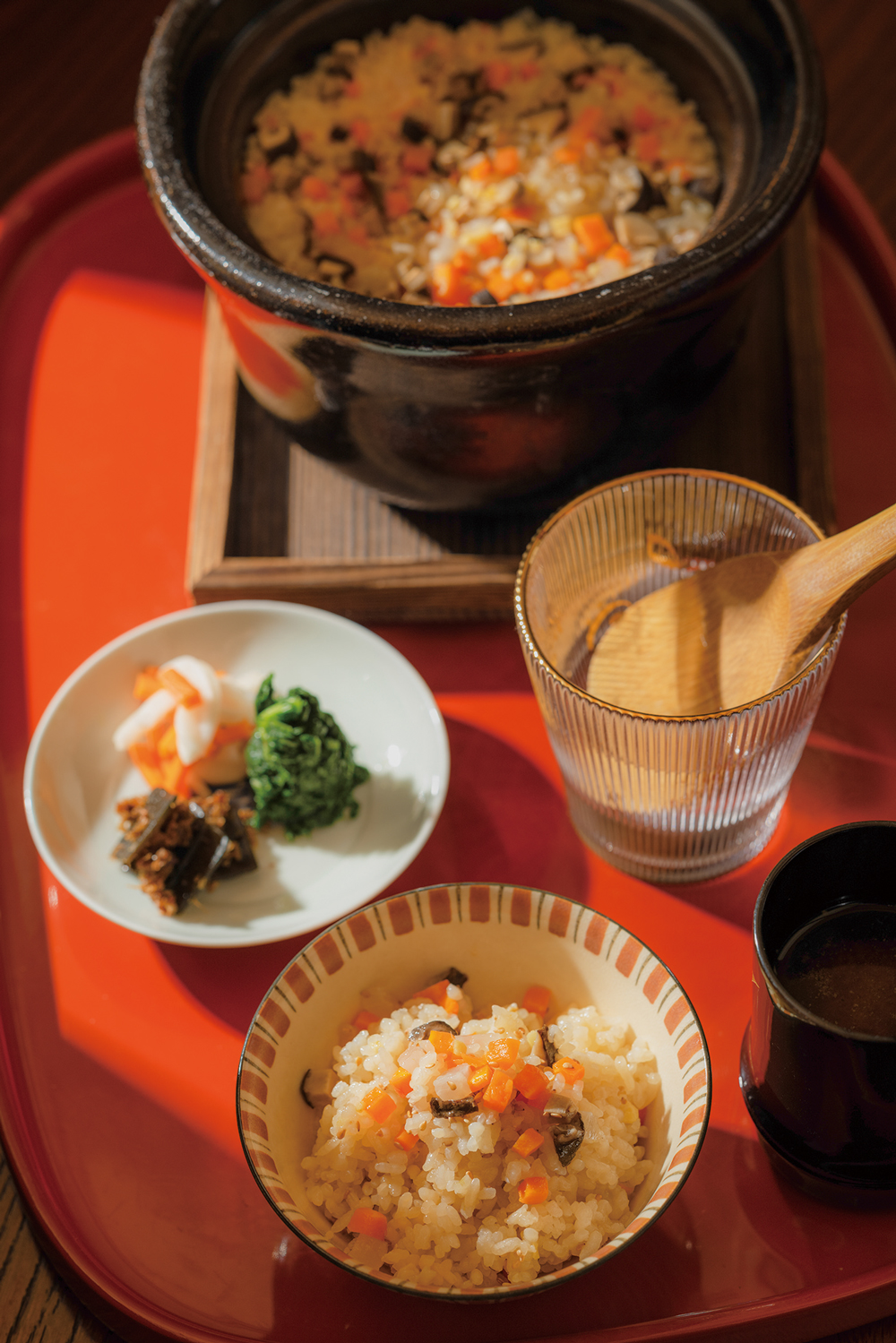
8. 喀什——甜點
無花果蜜餞
無花果乾醬-用無花果皮烹調
茶葉羊羹-用紅豆和茶葉製作的果凍
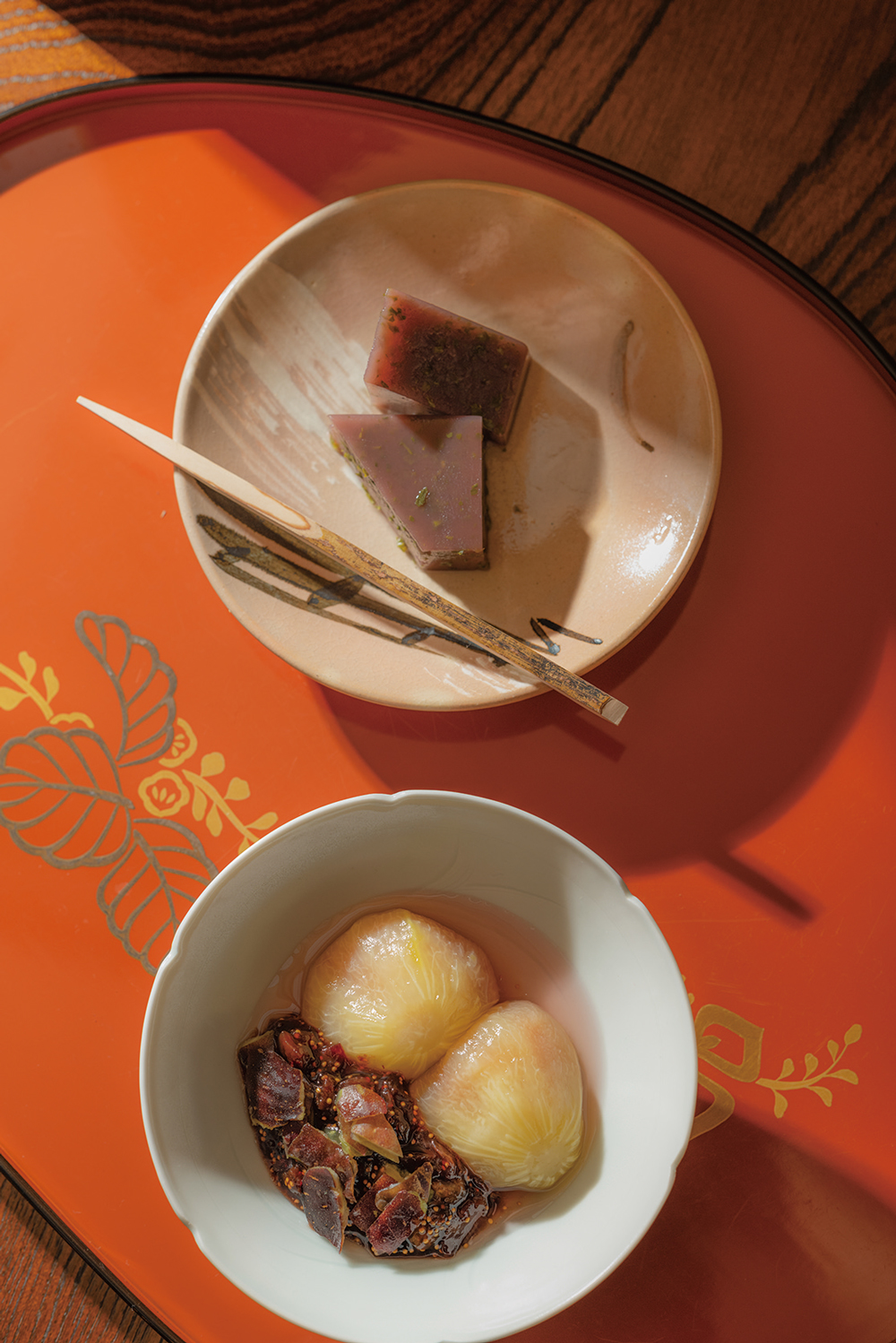
照片:中尾照相館 文字:河合宏之
